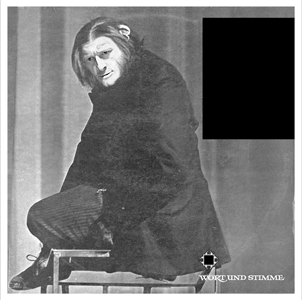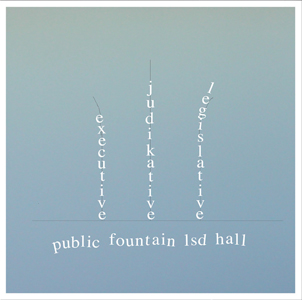The sound of a 4.3 meters high wind chime recorded in the dome of Secession in Vienna.
This record contains the sound of a wind chime recorded in the dome of Secession in Vienna on September 17, 2008 at 2.30 pm. The specifically developed wind chime was installed on the top of the building to send out “bad vibes” over Vienna during the course of Klaus Webers' solo exhibition.
The wind chime is 4.3 meters high and made from tempered aluminium. Its composition is based on the Tritone (tritonus)—the “diabolus” in music, what is know as the “devils interval.” “Diabolus in Musica” is Latin for the Devil in Music. It is used to describe a musical interval consisting of three whole tones comparable to the augmented fourth or diminished fifth. It is often used as the main musical interval of dissonance in Western harmony.
In medieval times, the Tritone—after being rejected by the Church as the interval of the Holy Trinity—was deemed the interval of the Devil himself. Some sources say the interval was outlawed as it was thought to evoke sexual feelings. There was a general belief that playing the interval aroused the devil. As a result a great deal of superstition became associated with the interval. Through this original symbolic association with Satan, and its avoidance, the interval became known in Western cultural convention to carry evil connotations and represent the “other.” In popular music such as heavy metal and particularly black metal the Tritone is an important interval. It is even used in the theme tune for The Simpsons.
The chimes are designed so that the frequency ratios of the instrument create distinct beats and waves when several pipes vibrate simultaneously. It is less about the isolated individual tones and instead their droning after-effects. Alternate pipe constellations result in different vibration patterns. These sonic patterns can be seen to modulate the surrounding physical space, dynamically overlapping or taking on the sound of the urban environment.
The recording of the sculpture was basically not manipulated in the recording studio.
666 copies limited edition.
See also:
Klaus Weber – Secession (catalogue publised on the occasion of the Klaus Weber exhibition at Secession).
Born 1967 in Sigmaringen, Klaus Weber lives and works in Berlin.
For anyone not used to today's postmedium condition, his constructions could be mistaken for the experiments or inventions of a scientist or engineer. The main element of many of his works is a force or species belonging to the natural world, meteorological or biological: wind, sunbeams and rainfall, as well as plants and insects. Brought into combination with industrial materials of various kinds, Weber's assemblages look as if they should be more at home on the laboratory bench than the gallery floor. Here, the natural world is made to behave as it rarely does: heavy rainfall follows a moving car on a dry day; a small tornado issues forth from an ordinary vacuum cleaner; mushrooms emerge through tarmac; a plant hangs in the air without soil; a cactus is not a single plant, but two conjoined, with a pot at either end; a vast moth appears on the equities pages of a newspaper. Some of Weber's work recalls the mermen that taxidermists made from gibbons and fish that found their way into some Victorian natural history museums at a time when the veracity of the duckbilled platypus was doubted and
Darwin's
Origin of the Species was shaking the intellectual foundations of the West.




